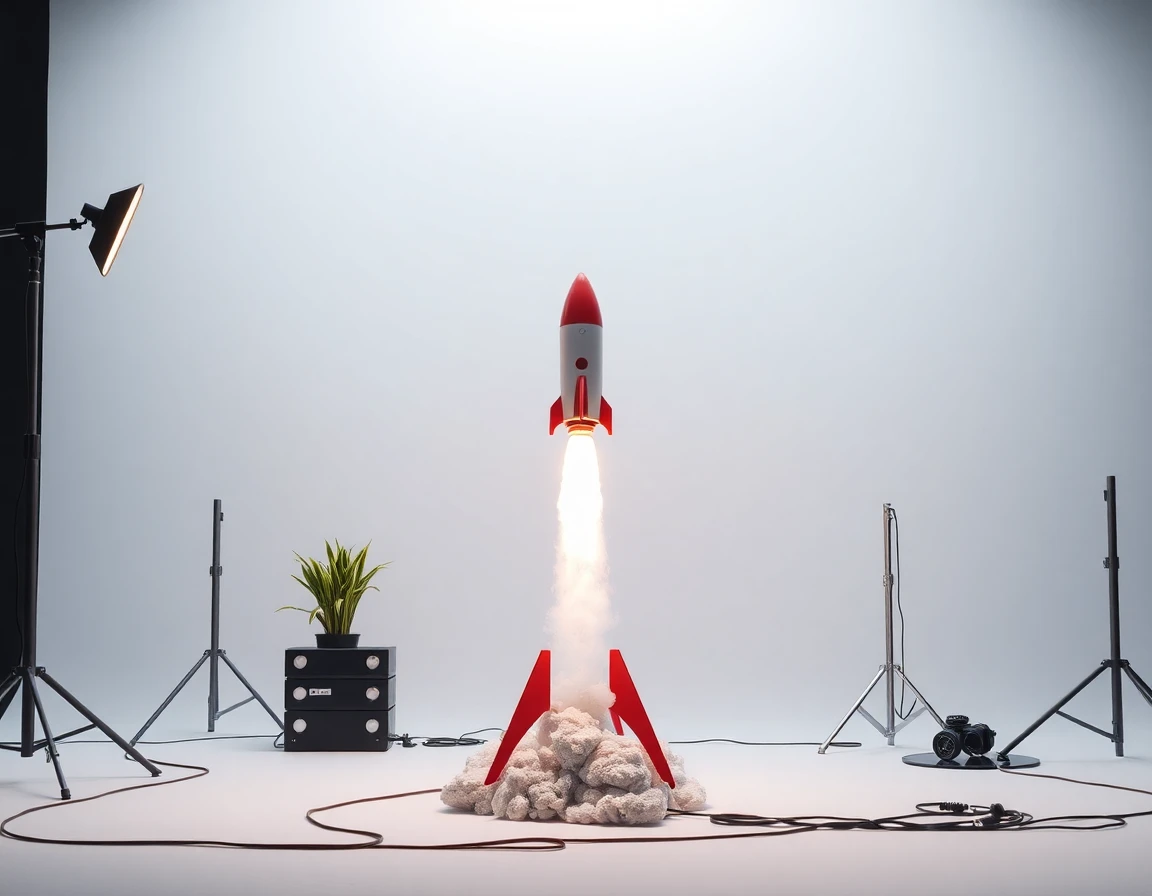The aerospace and defense sectors are witnessing a remarkable evolution in rocket technology, marked by unprecedented launch activity, groundbreaking propulsion research, and crucial policy updates. September 2025 has been a month of significant milestones that highlight both the operational prowess of companies like SpaceX and the innovative advancements in propulsion systems.
Major Launches and Missions
SpaceX’s Falcon 9 Launches
On September 11, SpaceX achieved its 114th Falcon 9 mission of 2025, successfully delivering a state-of-the-art communications satellite for an Indonesian telecom provider. This launch is part of an ongoing effort, with over 70% of SpaceX’s missions this year focused on expanding the Starlink megaconstellation, which now boasts more than 8,300 operational satellites. SpaceX’s relentless launch cadence showcases its dominance in global orbital access, facilitated by its robust launch infrastructure.
In addition to its commercial missions, SpaceX continues to push the envelope with its Starship program. The company conducted four test flights of the Starship this year, with the most recent flight occurring on August 26, as part of its ambitious plans for Mars settlement.
Cygnus XL Cargo Mission
Following on the heels of SpaceX’s success, on September 14, the Falcon 9 rocket launched Northrop Grumman’s Cygnus XL spacecraft as part of the NG-23 (CRS-23) mission. This mission carried over 11,000 pounds of scientific investigations and cargo to the International Space Station (ISS). The launch was expedited due to damage sustained by the previous Cygnus NG-22 spacecraft, highlighting the adaptability of commercial resupply partnerships with NASA and ensuring continuous support for ISS operations.
The Cygnus spacecraft is slated to be captured by the ISS’s Canadarm2 robotic arm on September 17, further showcasing the collaborative efforts between various aerospace entities to maintain the integrity of space research and exploration.
Policy Updates
In a significant regulatory advancement, the U.S. Department of the Air Force and the Federal Aviation Administration (FAA) have now authorized SpaceX to launch up to 120 Falcon 9 rockets annually from Cape Canaveral. This decision reflects both the company’s capacity to handle a high launch volume and the regulatory confidence in its safety and operational protocols.
Propulsion Technology Advances
Nuclear Thermal Propulsion Breakthroughs
September has also seen exciting developments in propulsion technology. Research published in Acta Astronautica has unveiled advancements in centrifugal nuclear thermal rocket (CNTR) technology. This innovative system could potentially reduce the duration of Mars missions from three years to just one year, with one-way trips taking as little as six months. Funded in part by NASA, the CNTR represents a significant leap over traditional chemical propulsion systems, although it still faces considerable engineering challenges.
Experts in the field advocate for sustained funding and support for nuclear propulsion as a priority for the future of deep-space exploration, emphasizing its potential to revolutionize travel to distant celestial bodies.
Hybrid Rocket Motors for Lunar Exploration
In a collaborative effort between Utah State University and NASA, researchers are investigating a 3D-printed hybrid rocket motor designed specifically for lunar landers. This propulsion system aims to enhance safety and environmental sustainability for crewed missions under the Artemis program. The hybrid motor has undergone extensive testing in both ambient and vacuum conditions, making it one of the most thoroughly characterized systems to date. Its adoption could signify a shift toward greener technologies in aerospace applications, which is increasingly important in today’s environmentally conscious climate.
Defense and Industrial Shifts
Transitioning to Domestic Rocket Systems
In response to geopolitical pressures and mandates to eliminate reliance on Russian propulsion technology, Northrop Grumman is developing the Antares 330 medium-class launch vehicle in collaboration with Firefly Aerospace. This new rocket aims to replace the retired Antares 230+, ensuring the U.S. aerospace sector remains resilient and self-sufficient. The Antares 330 is anticipated to be operational by 2026, paving the way for continued support of ISS operations and commercial satellite launches.
Flexibility in Commercial Resupply Missions
The swift execution of the Cygnus NG-23 mission underscores the flexibility inherent in commercial partnerships with NASA. These collaborations are vital for maintaining continuous supply lines to the ISS, even amidst unexpected logistical challenges, thereby ensuring the ongoing success of international space research initiatives.
Conclusion
As we move further into 2025, the rocket industry is rapidly evolving, driven by technological advancements and operational efficiencies. SpaceX remains at the forefront of launch frequency, while innovations in nuclear and hybrid propulsion technologies promise to open new frontiers for deep-space exploration. Furthermore, ongoing policy adaptations are fostering a more robust and self-reliant U.S. aerospace industry. These developments not only highlight the dynamic nature of the sector but also signal a future filled with exciting possibilities for exploration and discovery.
With the integration of advanced technologies such as precision accelerometers and advanced sensor modules, the aerospace industry is poised for remarkable growth and transformation. The ongoing collaboration between private companies and governmental agencies will undoubtedly play a pivotal role in shaping the future of rocketry and space travel.
References
-
Northrop Grumman’s 1st Cygnus XL spacecraft launches on cargo … (spaceflightnow.com) - 9/15/2025 A SpaceX Falcon 9 rocket blasts off from Space Launch Complex 40 (SLC-40) at Cape Canaveral Space Force Station on Sept. 14, 2025, to begin …
-
Nuclear rocket could slash mission times to Mars | The Independent (www.the-independent.com) - 9/15/2025 Nuclear rocket could slash mission times to Mars. Centrifugal nuclear thermal rocket can travel faster with less fuel. Anthony Cuthbertson.
-
USU Researchers Developing Hybrid Rocket Motors for NASA (www.usu.edu) - 9/15/2025 Experts at NASA are conducting critical tests on a hybrid rocket system developed at Utah State University’s Propulsion Research Laboratory.
-
Cygnus XL Cargo Craft Launches on Falcon 9 Rocket to Station (www.nasa.gov) - 9/15/2025 Live coverage of the spacecraft’s arrival will begin at 5 a.m. on Wednesday, Sept. 17, on NASA+, Amazon Prime, and more. Learn how to watch NASA …
-
September 2025 - Spaceflight Now (spaceflightnow.com) - 9/15/2025 Department of the Air Force, FAA clear SpaceX to launch up to 120 Falcon 9 rockets annually from Cape Canaveral · September 12, 2025 Will Robinson-Smith.
-
Rapid rocket growth raises alarm over Earth’s fragile ozone layer (www.sciencedaily.com) - 9/15/2025 Rapid rocket growth raises alarm over Earth’s fragile ozone layer. Date: September 15, 2025; Source: ETH Zurich; Summary: The booming space …
-
L3Harris Receives Multi-Year Javelin Solid Rocket Motor Contract (www.l3harris.com) - 9/15/2025 MELBOURNE, Fla., Sept. 15, 2025 — L3Harris Technologies (NYSE: LHX) has received a contract valued up to $292 million to continue its role …
-
New Mexico Scientific Balloon Campaign Update - Sept. 14 - NASA (www.nasa.gov) - 9/15/2025 NASA launched two scientific balloon missions from the agency’s Fort Sumner, New Mexico, launch facility Sunday, Sept. 14, 2025.
-
SpaceX launches powerful satellite to orbit for Indonesian telecom … (www.space.com) - 9/12/2025 SpaceX continued its busy 2025 tonight (Sept. 11), sending a satellite high above Earth for an Indonesian telecom company. A Falcon 9 rocket …



